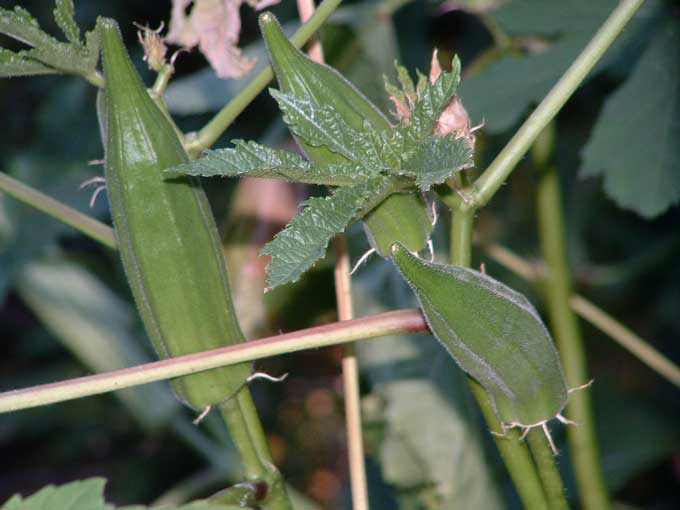
About the crop
Bhindi (Abelmoschus esculentus L.) is a warm season, annual or perennial vegetable, growing up to 2 m height. The leaves are 10 to 20 cm long and broad, and palmately lobed with 5 to 7 lobes. Flowers develop in the leaf axil and are large, 4 to 8 cm in diameter, with five white to yellow petals, often with a red or purple spot at the base of each petal. Each flower blooms for only one day and eventually forms the pod. The pod is a long capsule, 5 to 20 cm long, yellow, red or green in colour, generally ribbed and fuzzy and contains numerous seeds.
Abelmoschus esculentus, commonly known as okra or lady's finger or bhindi, is a warm season flowering plant belonging to the family Malvaceae, and cultivated throughout the tropical and warm temperate regions of the world for its edible green fruits.The word Abelmoschus is derived from the Arabic "abu-l-mosk" meaning 'father of musk', referring to the musk-scented seeds and Latin word "esculentus" meaning 'edible'.
Origin and distribution
The genus Abelmoschus has its origin in South-East Asia. Even though the cultivated species Abelmoschus esculentus has been reported from the whole of tropical Africa, its origin is still uncertain. Egyptians were cultivating bhindi as early as 12th Century BC. From there, it spread throughout Africa, the Mediterranean, the Balkans and India. Now, its cultivation is widespread in tropical, subtropical and warm temperate regions, but is particularly popular in West Africa, India, the Philippines, Thailand and Brazil.
Warm humid tropical conditions are ideal for luxurious growth and high yield of okra. It grows best within a temperature range of 24-27°C and is highly tolerant to high temperature and drought condition. But, the crop is highly susceptible to frost injury as severe frost causes damages to the pods. Temperature below 120C is detrimental to the crop and seeds fail to germinate when temperature falls below 20°C. But, the crop can be successfully grown in rainy season even in heavy rainfall area.
Bhindi can be cultivated in a wide range of soils. However, loose, friable, well drained loamy and sandy loam soils rich in organic matter are ideal for its growth. It also gives good yield in heavy soils with good drainage. But the crop cannot tolerate excessive moisture or poorly aerated soils. A pH range of 6.0-6.8 is considered as optimum. Alkaline, saline soils and soils with poor drainage are not good for this crop.
